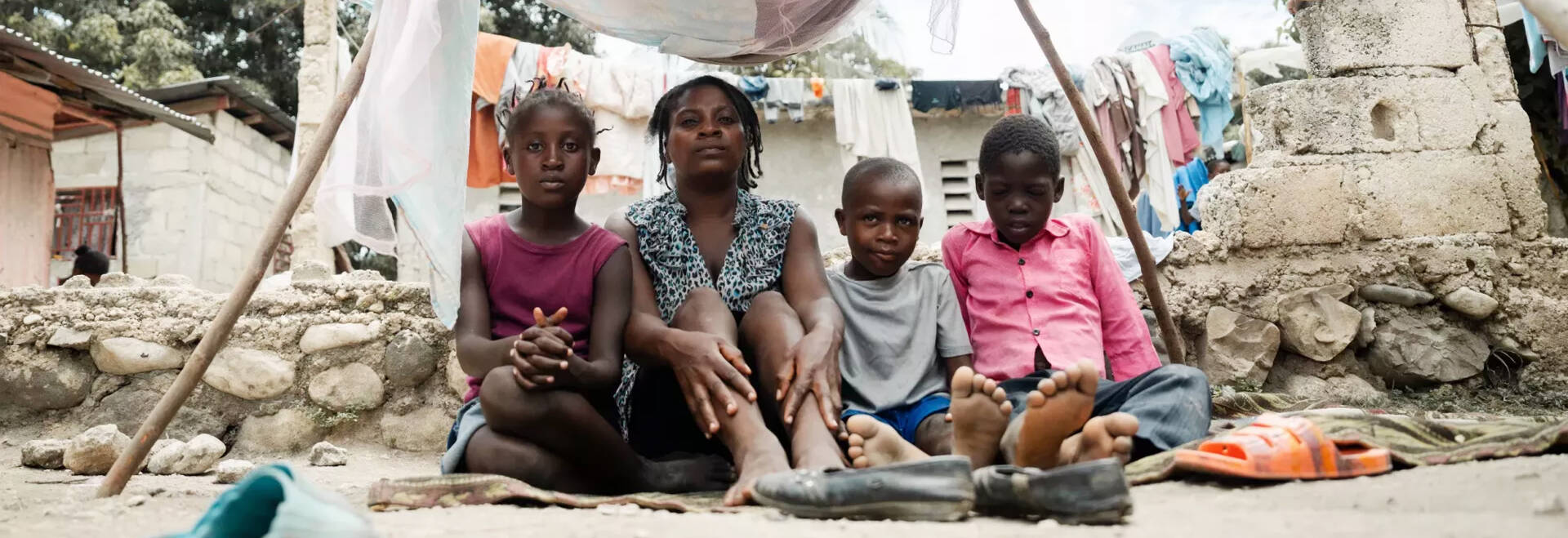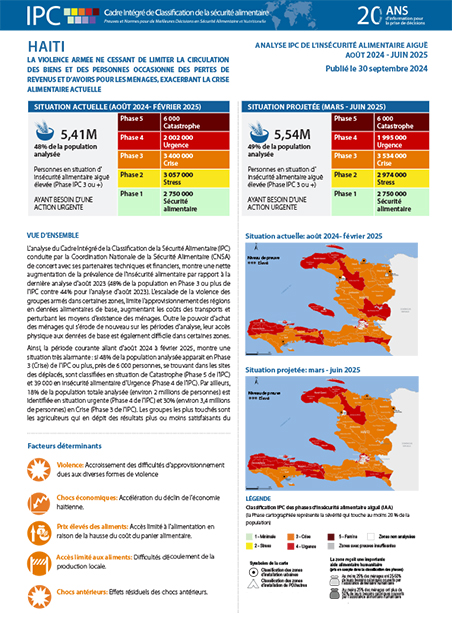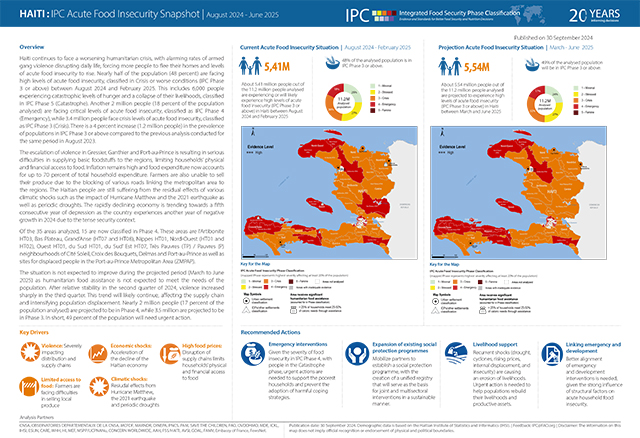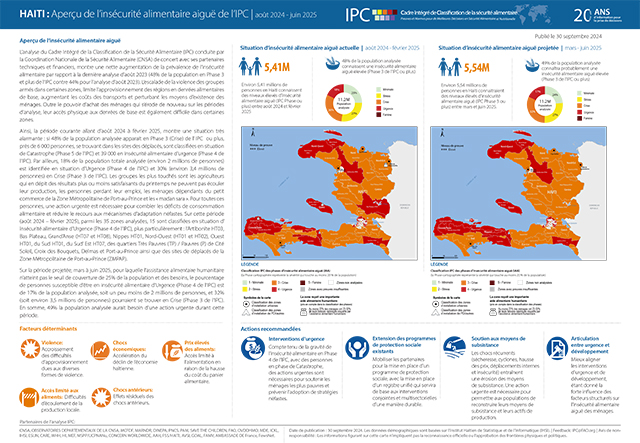
- © UNICEF
HAITI: Armed gang violence, economic decline push half of the population into high levels of acute food insecurity
Haiti continues to face a worsening humanitarian crisis, with alarming rates of armed gang violence disrupting daily life, forcing more people to flee their homes and levels of acute food insecurity to rise. Nearly half of the population (48 percent) are facing high levels of acute food insecurity, classified in Crisis or worse conditions (IPC Phase 3 or above) between August 2024 and February 2025. This includes 6,000 people experiencing catastrophic levels of hunger and a collapse of their livelihoods, classified in IPC Phase 5 (Catastrophe). Another 2 million people (18 percent of the population analysed) are facing critical levels of acute food insecurity, classified as IPC Phase 4 (Emergency), while 3.4 million people face crisis levels of acute food insecurity, classified as IPC Phase 3 (Crisis). There is a 4 percent increase (1.2 million people) in the prevalence of populations in IPC Phase 3 or above compared to the previous analysis conducted for the same period in August 2023.
The escalation of violence in Gressier, Ganthier and Port-au-Prince is resulting in serious difficulties in supplying basic foodstuffs to the regions, limiting households’ physical and financial access to food. Inflation remains high and food expenditure now accounts for up to 70 percent of total household expenditure. Farmers are also unable to sell their produce due to the blocking of various roads linking the metropolitan area to the regions. The Haitian people are still suffering from the residual effects of various climatic shocks such as the impact of Hurricane Matthew and the 2021 earthquake as well as periodic droughts. The rapidly declining economy is trending towards a fifth consecutive year of depression as the country experiences another year of negative growth in 2024 due to the tense security context.
The situation is not expected to improve during the projected period (March to June 2025) as humanitarian food assistance is not expected to meet the needs of the population. After relative stability in the second quarter of 2024, violence increased sharply in the third quarter. This trend will likely continue, affecting the supply chain and intensifying population displacement. Nearly 2 million people (17 percent of the population analysed) are projected to be in Phase 4, while 3.5 million are projected to be in Phase 3. In short, 49 percent of the population will need urgent action.
Join our mailing list



